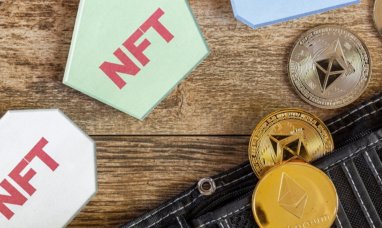Dividends are a great way to build an income from your investments.
Dividends offer a unique way to turn your stock investments into a steady income. But, how do they work and how can you invest in your own dividends and start building investment income? Here’s how to generate income with dividends!
What Are Dividends?
While many investments are primarily purchased to sell at a higher price, some investments can provide you with a steady stream of cash payments. This includes rental income or any sort of income that does not require work or active involvement.
Many of these assets require debt or large purchases to access, but financial markets give us a wide means of accessing them. This includes instant access to dividend assets like public businesses, commercial mortgages, managed funds, and more.
Dividend Stock
The most common way to invest in dividends is to purchase a dividend stock. This type of stock is offered by companies that have already achieved good growth and are seeking to reward and attract investors with steady cash payments from their profits.
While smaller companies would prefer to keep their profits in the business to grow their company and share price for investors, dividend stock offers a very liquid means of accessing the profits of your investments.
In a way, dividend stocks are very similar to bonds. Bonds are loans that provide a steady, regular income instead of the asset growth of typical stocks. Dividend payers also focus on providing a steady income without as much focus on company growth.
Dividend Funds
Much like typical stocks, dividend stocks can be bundled, managed, and sold in a basket of assets by fund managers. These fund managers will focus on researching and choosing assets that provide the greatest possible dividend for their investors.
However, not all dividend funds are focused on the stock market. Dividend funds often involve assets other than stocks that can otherwise be difficult for the average investor to access.
This includes commercial real estate mortgage payments, government real estate mortgage payments, hybrid combinations of assets, and more.
How Can I Build Income With Dividends?
A dividend is paid based on the profits of the company that sells, or issues, them. So if a company does well, then they can pay out a larger portion of their stock as dividends. If it does poorly, then they pay out a smaller portion of dividends.
However, it’s important to remember that a dividend stock is still equity. In other words, the dividend stock you own can still go up or down in value and be resold for a profit. So you can still make gains or losses on your dividend stock, but the company is less focused on this.
Calculate Dividends
Dividends are paid as a priced portion of the underlying stock. For example, let’s say a stock is priced at $10 per share and pays out a dividend of $0.8. This is a dividend of 8%, that is the total portion of your investment that is paid out as dividends.
So, if you owned 100 shares worth $1,000 at $10 per share, then you would receive a dividend payment of $80 when it came time to pay dividends. Now this may not seem like a lot at first, but it’s important to consider the payment schedule and the effect of compounding.
Payment Schedule
Not all dividends are paid at the same time, but most dividends are paid quarterly. That means you’ll receive four payments spaced out by three-month periods throughout the year. These payments often go along with quarterly reports that detail the company’s performance.
However, some dividends are paid annually or semi-annually, meaning that you will only receive a payment once a year or twice a year. This is a good option for patient investors that are looking to build steady growth, and longer payment periods typically mean larger payments.
Finally, there is a class of dividend investments that pay monthly. This is a popular choice, because it’s similar to monthly payments of wages or salaries, and the shorter payment period means that monthly dividends can be reinvested in order to grow future dividends.
Compounding
One of the most powerful concepts in investing is compounding. This involves taking your profits or dividends from an investment and putting it back into your portfolio. Each reinvestment is a larger portion of an increasing portfolio, so it grows exponentially.
For example, let’s say we have a dividend stock worth $10 per share that pays a healthy dividend of $1. If you have 1,000 shares, you will receive $1,000 as your first dividend payment. If you reinvest that $1,000 dividend, then you will own 1,100 shares and receive a $1,100 as your second payment.
As your dividend increases along with your investment, the growth of your investment will slowly accelerate over time.
After 20 dividend payments, you will be receiving a $6,115.91 dividend and have built up an investment worth $67,275.00.
After 40 payments, you will be receiving a $41,144.78 dividend and have built up an investment worth $452,592.56.
Now you can see the value of compounding with investing, and this is from investing a fixed amount only once and simply waiting. The company will pay you dividends just for owning stock, these returns do not require any sort of active management of the underlying company.
There are ways to accelerate this process and make higher returns, but this is just an example of a fixed portfolio with a healthy and steady dividend. In reality, you can be more active in how you manage this investment. Let’s explore how this can be accomplished.
Making Your First Investments
Making your first dividend investment is as simple as opening an account with a registered retail broker , depositing funds, and ordering a purchase of an asset that yields dividends.
However, while the process may be relatively simple, making successful investments requires forethought. It’s important to be careful with the assets you choose to invest in, and there are also ways to manage your investments to maximize returns.
Savings and Contributions
In our previous example, 1,000 shares were purchased once and left to sit and grow over time. However, it’s far more effective to make regular contributions to steady investments such as dividend payers, mutual funds, exchange traded funds, and other conservative investments.
This is the philosophy behind many employer’s pension investment benefits such as 401(k) plans. By making regular contributions to a stable investment such as those that pay dividends, you are not only encouraging healthy savings habits, you are accelerating your profits.
The Potential of Healthy Dividend Investing
So, let’s consider an example. Say you set aside $1,000 per month for investing. That’s not a small sum, but it is achievable with healthy saving habits, and it would lead to gaining $12,000 in cash every year. After all, a penny saved is a penny earned. However, savings can be carefully invested. Not just to beat inflation, but also to steadily grow your assets.
Let’s say you put those investments into a portfolio of steady monthly dividend assets that pay combined annual dividends of 8% each year. That means you’ll receive around 0.67% of your total portfolio every month as income, and you contribute a healthy portion of your savings along with reinvested dividends into this portfolio.
By the end of your first year, you will have saved the usual $12,000, but you will have also earned your initial dividends worth $532.93 for a total portfolio balance of $12,532.93.
By year five, you will have $60,000 total saved, and you will have had an annual return in dividends of $5,241.12, with total dividends of $13,966.70 for a total portfolio balance of $73,966.70.
By year ten, you will have $120,000 saved in monthly $1,000 deposits, your annual dividend income will be $13,686.61, your total dividends accumulated will be $64,165.68, and your total portfolio balance will be $184,165.68.
That’s the power of healthy saving habits when combined with wise investments. Gathering money little by little will make it grow, but it takes a lot of patience and discipline.
In this example, 20 years of steady $1,000 deposits and 8% annual returns compounded monthly will total $240,000 in savings, $45,015.03 in annual income, $352,947.22 in total dividend payments, and $592,947.22 in total portfolio value.
Not bad, considering that this annual dividend income is more than enough to substitute a median per capita income in the US, and the portfolio value is enough to purchase one or two homes in cash. You can see the power of combining good saving habits with wise investing.
However, dividend investing is safer than stock equity investing. The stock market would give you a return of around 10% through stable index fund investments. Other investments would yield still higher returns, but that requires more risk and active management.
Popular Choices
It’s important to diversify your portfolio. Don’t put all your money into one investment, distribute it across several investments. That way, if one asset does poorly, the rest of the portfolio can still guarantee value.
Here are some popular choices along with their most recent annual dividend returns:
-
-
- COLUMBIA RESEARCH ENHANCED VALUE ETF (NYSEARCA:REVS): 23.31%
- INVESCO MSCI SUSTAINABLE FUTURE ETF (NYSEARCA:ERTH): 15.55%
- ORCHID ISLAND CAPITAL INC (NYSE:ORC): 15.45%
- AT&T (NYSE:T): 6.45%
- WELLTOWER (NYSE: WELL): 4.6%
- VANGUARD REIT ETF (VNQ): 4.2%
-
These are just a few examples. In general, lower yields mean more consistency, but this isn’t always the case. Sometimes the higher yield funds or stocks are truly better investments.
Do you research the fund or stock and review the consistency of its performance record. Understand the fundamentals that drive its value, and carefully read the financial reports that it releases each quarter.
A careful and informed investor can build a serious income from dividend investing.
Featured Image: Twenty20








